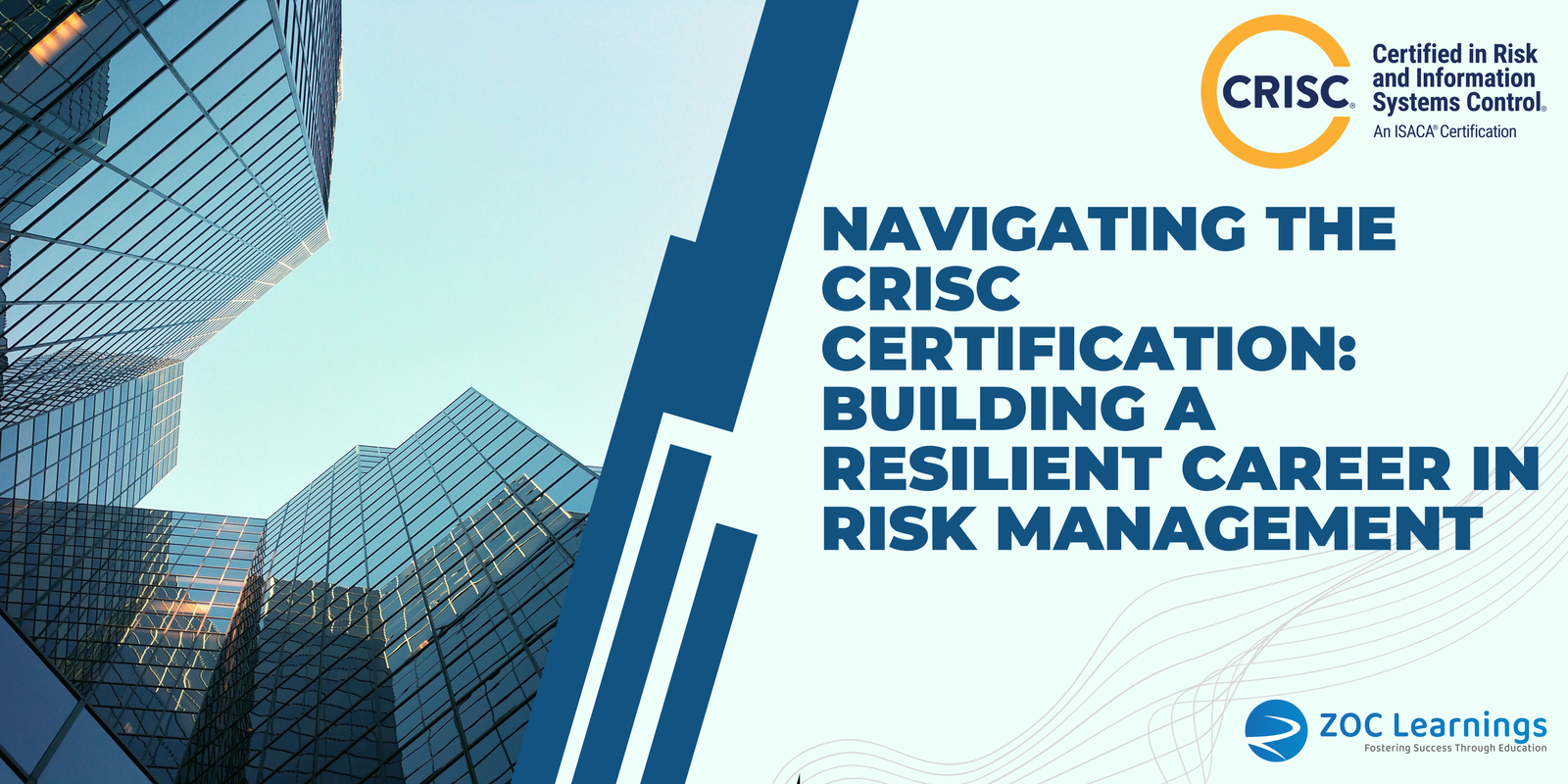Risk management is a crucial aspect of modern business operations. Organizations face various challenges in identifying, assessing, and mitigating risks to ensure their sustainability and success. In this context, the Certified in Risk and Information Systems Control (CRISC) certification stands out as a premier credential for professionals looking to excel in the field of risk management. This article delves into the significance of CRISC certification, the benefits it offers, the path to obtaining it, and how it can shape a resilient career in risk management.
Introduction
Risk is an inherent part of any business environment, and managing it effectively is vital to ensure the long-term success of an organization. CRISC certification equips professionals with the skills and knowledge to navigate the complex world of risk management.
Understanding CRISC Certification
What is CRISC?
CRISC, which stands for Certified in Risk and Information Systems Control, is a certification offered by ISACA (Information Systems Audit and Control Association). It is designed for individuals who are engaged in risk identification, assessment, evaluation, response, and monitoring, particularly in the context of information systems.
Why is CRISC Important?
CRISC is important as it validates a professional’s ability to manage risks in an ever-evolving technological landscape. With the increasing integration of technology in business processes, the need for experts who can identify and mitigate information systems risks is paramount.
Benefits of CRISC Certification
Enhanced Career Opportunities
CRISC-certified professionals are highly sought after by organizations aiming to strengthen their risk management strategies. This certification opens doors to a wide range of roles, including IT risk analyst, compliance officer, and security consultant.
Credibility and Recognition
CRISC is globally recognized and respected. Holding this certification demonstrates a professional’s commitment to excellence in risk management, boosting their credibility in the eyes of employers and peers.
Expertise in Risk Management
CRISC certification signifies a deep understanding of risk management concepts and practices. Professionals gain expertise in aligning risk management strategies with business goals, ensuring a holistic approach to risk mitigation.
The Path to CRISC Certification
Eligibility Criteria
To pursue CRISC certification, individuals typically need at least three years of relevant work experience in at least three of the CRISC domains. This ensures that candidates have a solid foundation in risk management practices.
CRISC Exam Details
The CRISC exam consists of four domains, each focusing on a specific aspect of risk management. The exam assesses a candidate’s knowledge, skills, and ability to apply risk management principles.
Exam Preparation
Proper exam preparation is key to success. This involves comprehensive study materials, practice exams, and joining study groups or workshops to enhance understanding.
Mastering the Domains of CRISC
Domain 1: Risk Identification
This domain emphasizes identifying risks specific to an organization’s business context and understanding the potential impact of these risks on business processes.
Domain 2: Risk Assessment
Here, professionals learn how to assess risks by analyzing their likelihood and potential impact, enabling the prioritization of risk mitigation efforts.
Domain 3: Risk Response and Mitigation
This domain covers strategies for responding to and mitigating identified risks, including risk acceptance, avoidance, mitigation, and transfer.
Domain 4: Risk and Control Monitoring and Reporting
Professionals in this domain understand the importance of continuous monitoring, measurement, and reporting of risks and their corresponding controls.
Building a Resilient Career with CRISC
Standing Out in the Job Market
CRISC certification sets professionals apart in a competitive job market. Employers value candidates who possess specialized skills and knowledge in risk management.
Leading Risk Management Initiatives
CRISC-certified professionals are equipped to lead risk management initiatives within their organizations, driving proactive risk identification and mitigation strategies.
Continuous Learning and Growth
Obtaining CRISC certification is just the beginning. Professionals must engage in ongoing learning to stay updated on emerging risks and evolving risk management practices.
CRISC vs. Other Certifications
Comparing CRISC and CISM
While both CRISC and Certified Information Security Manager (CISM) certifications focus on information security, CRISC places more emphasis on risk management within the broader business context.
CRISC and CISSP: Bridging the Gap
Certified Information Systems Security Professional (CISSP) certification complements CRISC by focusing on technical aspects of security. Professionals holding both certifications can bridge the gap between technical and risk management domains.
Conclusion
CRISC certification plays a pivotal role in shaping a resilient career in risk management. By equipping professionals with the skills to identify, assess, and respond to risks, CRISC empowers individuals to thrive in a rapidly changing business landscape.
FAQs
- Q: How do I qualify for CRISC certification?
- A: To qualify, you need at least three years of relevant work experience in at least three CRISC domains.
- Q: What is the significance of CRISC in risk management?
- A: CRISC validates your expertise in managing risks, especially in the realm of information systems.
- Q: Can CRISC-certified professionals lead risk management initiatives?
- A: Absolutely, CRISC equips professionals to lead proactive risk management efforts within organizations.
- Q: How does CRISC compare to CISM?
- A: While both focus on security, CRISC emphasizes risk management in a broader business context, whereas CISM centers on information security.
- Q: What’s the value of holding both CRISC and CISSP certifications?
- A: Holding both certifications bridges the gap between technical security aspects and risk management, enhancing career prospects.











